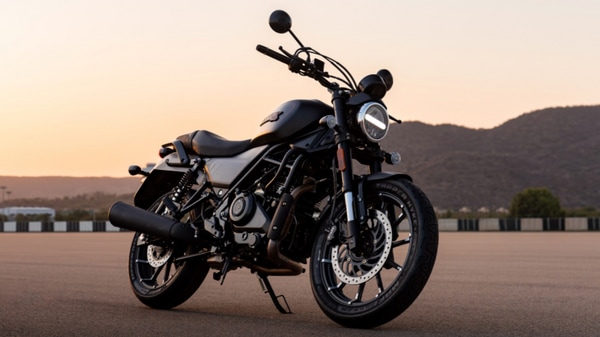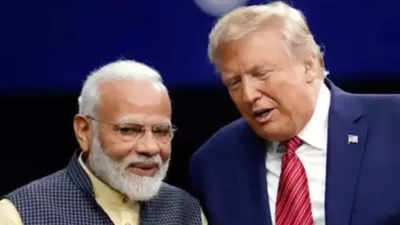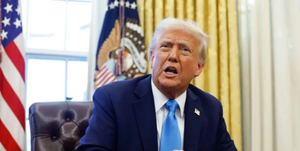UK officials have compiled an extensive 417-page document detailing US imports that may face tariffs as a response to Trump’s White House onslaught against global trade.
Popular items such as Levi’s jeans, Jack Daniel’s whiskey, and Harley Davidson motorcycles feature prominently in this extensive list.
These products were already subject to tariffs during the trade wars of Mr. Trump’s initial term in office.
Additionally, the exhaustive list encompasses a variety of goods, from livestock and meats like chicken wings to more unusual items including rollercoasters, cricket balls, live bees, and mannequins.
In a surprising twist that may displease the golf-loving president, the compilation includes golf clubs and balls produced in the USA.
This document was unveiled during a four-week consultation period aimed at determining the UK’s response to Trump’s tariff-related rhetoric.
Under Trump’s ‘Make America Wealthy Again’ strategy, the UK has already faced a general 10 percent tariff on its exports to the US, leading to a decline in stock markets globally.
Sir Keir Starmer and Business Secretary Jonathan Reynolds are currently working to negotiate a trade agreement that would eliminate these tariffs.
However, they have established a deadline of May 1, after which the UK may take action.

Consumer favourites like Levi’s jeans, Jack Daniel’s whiskey, and Harley Davidson motorcycles are all in the astonishingly lengthy document.

The comprehensive list also encompasses items from livestock and raw meats such as chicken wings to rollercoasters and cricket balls.

The list was released as part of the government’s four-week consultation on how to respond to Trump’s tariff tirade last night.
The consultation stated: ‘We want to hear your thoughts on the potential impacts of any future UK tariffs on US goods, in response to recent tariff announcements made by the US government.’
‘The feedback collected will assist the Government in evaluating the implications of any UK tariff measures that could be implemented.’
Business Secretary Jonathan Reynolds informed MPs that businesses will have the opportunity to share their views on how they will be affected by any UK actions aimed at countering the US president’s global trade policies.
The Prime Minister has acknowledged that the 10 percent import tariff would have negative economic repercussions for the UK.
Officials are committed to continuing negotiations for a trade agreement with the US, while Sir Keir Starmer emphasized that ‘no options are off the table’ regarding the response.
During a Commons address on Thursday, Mr. Reynolds remarked: ‘We believe the best path to economic stability for the workforce is through a negotiated agreement with the US that leverages our shared strengths.’
‘Nonetheless, we reserve the right to take any actions deemed necessary if a deal is not reached.’

In a move that may displease the golf-loving president, the list includes clubs and balls made in the USA.
‘To ensure that the UK retains every option available in the future, I am formally launching a request for input regarding the ramifications for British businesses of potential retaliatory measures.
‘This is a necessary step for maintaining all options on the table.
‘Over the next four weeks until May 1, 2025, we will seek the opinions of UK stakeholders on products that could possibly be included in any UK tariff reaction.
‘This effort will also allow businesses to express their views and influence the planning of any potential UK actions.
‘If we reach a point where we can negotiate an economic agreement with the US that ends the tariffs on our industries, this request for input will be suspended, and any resultant measures will be revoked.’
Mr. Reynolds added: ‘Further details regarding the request for input will be available on gov.uk later today, along with an indicative list of products that the Government considers most appropriate for potential inclusion.’
On Wednesday night, the US president announced tariffs affecting countries worldwide, with the UK’s 10 percent rate classified as the lowest ‘baseline’ rate, though the Prime Minister acknowledged that British exporters would suffer from this charge.
When addressing senior executives from major UK companies at Downing Street, Sir Keir stated: ‘Clearly, the decisions made by the US will have economic consequences both here and internationally.’
He emphasized that ‘no one benefits from a trade war’ and reaffirmed that the UK maintains a ‘fair and balanced trade relationship with the US.’
Negotiations for an ‘economic prosperity deal’ expected to alleviate the impact of the tariffs will proceed, as Sir Keir promised to ‘fight for the best deal for Britain.’



However, he stated he would ‘only pursue a deal that serves the national interest and is the right decision for the safety of working individuals.’
The Government expressed some relief that the 10 percent rate imposed on the UK is lower than those on other countries.
The EU faces tariffs of 20 percent, while Japan’s rate stands at 24 percent.
In 2023, the UK exported £60.4 billion worth of goods to the US, representing approximately 15 percent of all goods exports.
While the 10 percent blanket tariff will take effect on Saturday, the car sector has already been afflicted by a 25 percent import duty that commenced early Thursday morning.
The FTSE 100 Index experienced a sharp decline upon opening on Thursday, dropping 122.4 points or 1.4 percent in the initial minutes of trading.
Mr. Trump characterized the tariffs as ‘reciprocal’ responses to levies imposed by other countries, though the rationale for the specific 10 percent figure for the UK remains unclear.
The president also cited ‘exorbitant’ VAT rates as a barrier for US businesses, even though this tax affects all purchases in the UK regardless of origin.
























